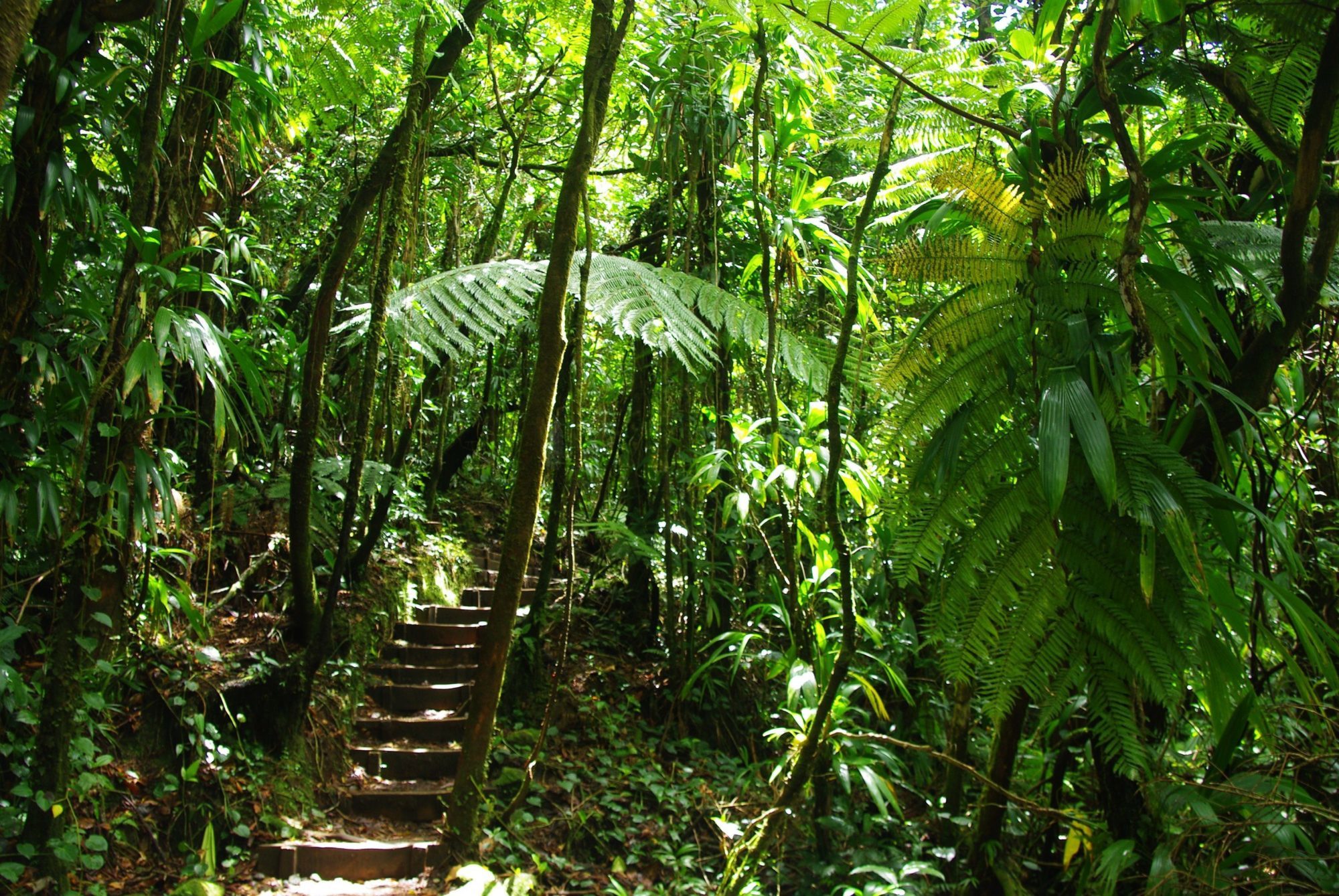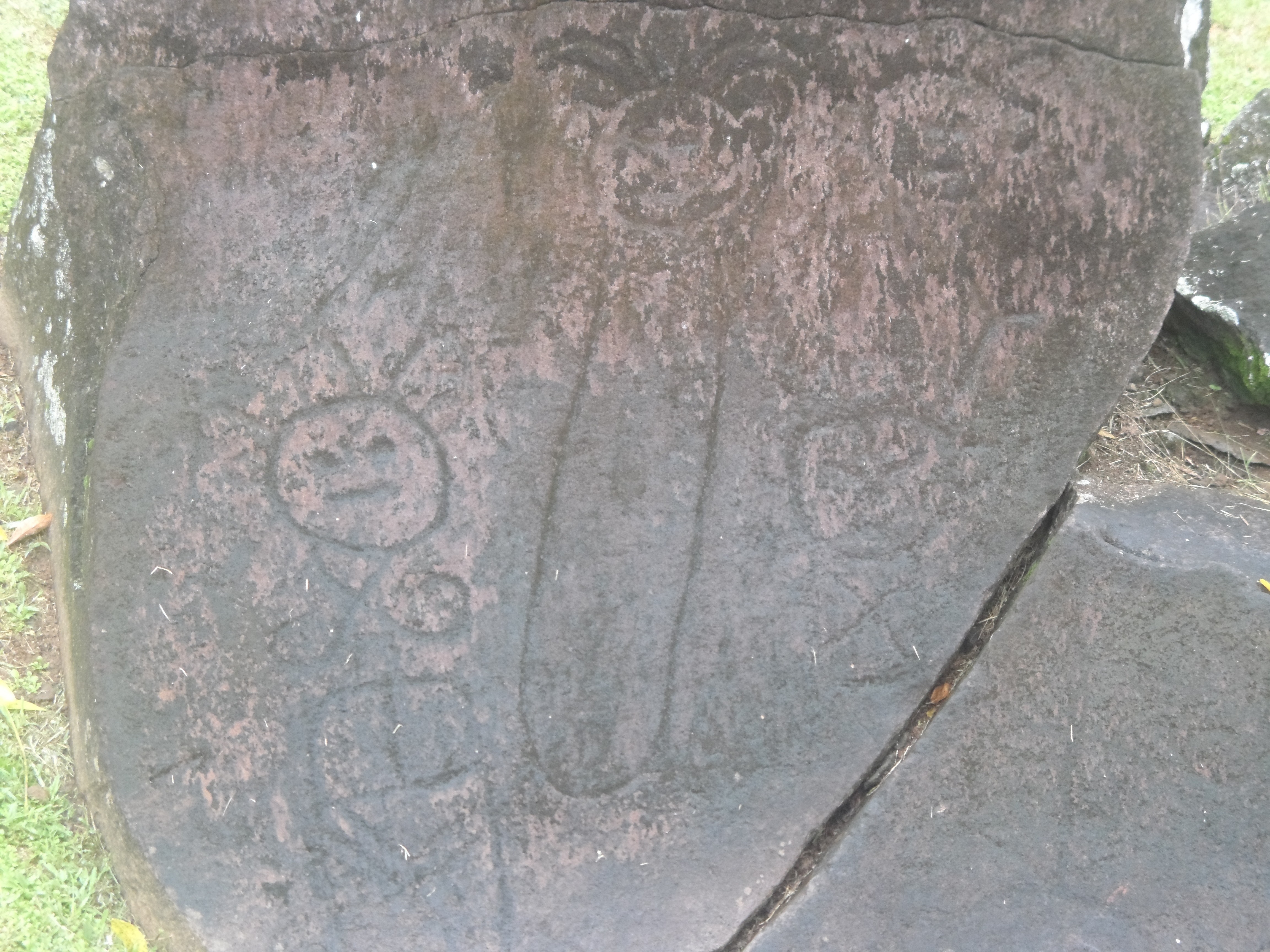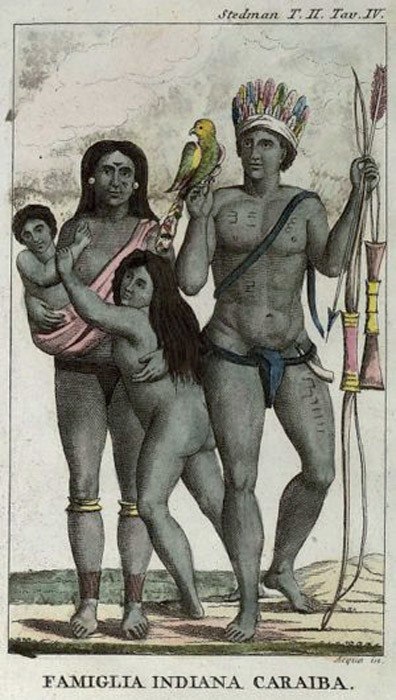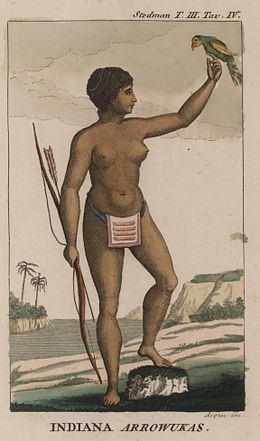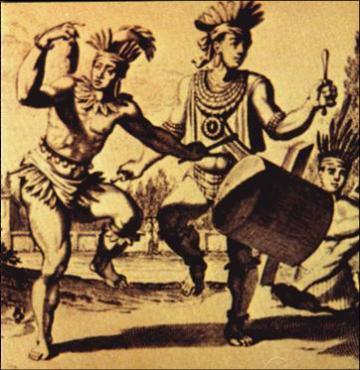
Amerindians
Christopher Colombus ‘discovered’ Guadeloupe on the 4th November 1493 during his second voyage to the West Indies. That was the first time a European set foot on the Guadeloupian archipelago, but the islands had been inhabited for a long time before that…
Native American people (or Amerindians) from the coast of modern day Venezuela had reached the islands of the Lesser Antilles around 2,500 BC. They lived from hunting, fishing and gathering local fruit. As they were a nomadic people, sheltering in natural places such as caves, they have left almost no discernible traces of their time in Guadeloupe.
It wasn’t until another 2,000 years later that the first ‘Arawak’ Indians settled in the Guadeloupe archipelago. Originally from the Orinoco basin in Venezuela, they practised a shifting cultivation of small agricultural plots that were established in the heart of the forest where they grew mainly cassava, behind the villages where they lived on the coastline.
Over centuries, these Amerindian people colonised the Guadeloupe archipelago; the Arawaks were peaceful and wise and lived in perfect harmony with the nature surrounding them. Although cassava was their main crop they also varied their food with beans, fruit, and the results of their hunting and fishing. They cultivated cotton with which they made the hammocks they slept in, and they also made fibre rope.
It was the latter who were responsible for the many petrographs (rock engravings) that can be seen mainly in the south of Basse-Terre, particularly in the area of Trois-Rivières which was probably a major cultural centre for the Amerindians living in this part of the world at that time. Of all the French West Indies, Guadeloupe has the most petrographs although this localised profusion of rock engravings has not yet been fully explained…
At the end of the 7th Century, another civilisation invaded the area; the Caribs. It was the latter that called the island Caloucaera (Karukera), meaning ‘Island of beautiful waters’.
Originally migrants from the Orinoco as well, the Carib Indians (Caribs) or Kalinas were a formidable warrior race. They swept through the Antilles exterminating most of the people in their path, the original island inhabitants.
The warlike Caribs (who were said to have practiced cannibalism) therefore took the place of the Arawaks, inhabiting the islands they invaded although Columbus described them as naïve and easily ‘domesticated’…
According to legend, during their bloody raids on the Arawaks, the Caribs often spared the women. Not through gallantry but to keep them for personal use… Therefore, according to historical accounts, the Arawaks were exterminated as a separate race, the Caribs ate the men and kept the women, however studies have disproved this theory and tended to show that this was a simple cultural evolution.
The first colonists therefore had the surprise of hearing two different languages spoken by the same Indians; the Carib language by the men and the Arawak language by the women.
It was these people, the ‘Carib’ Indians that Christopher Columbus met in 1493.
This civilisation reached its end at the beginning of November 1493 when the 1,500 men of Christopher Columbus set foot in Guadeloupe which caused the Carib Indians to retreat from one island to the next finally retreating to the south of Dominica where there remains a population of around 3,000.
